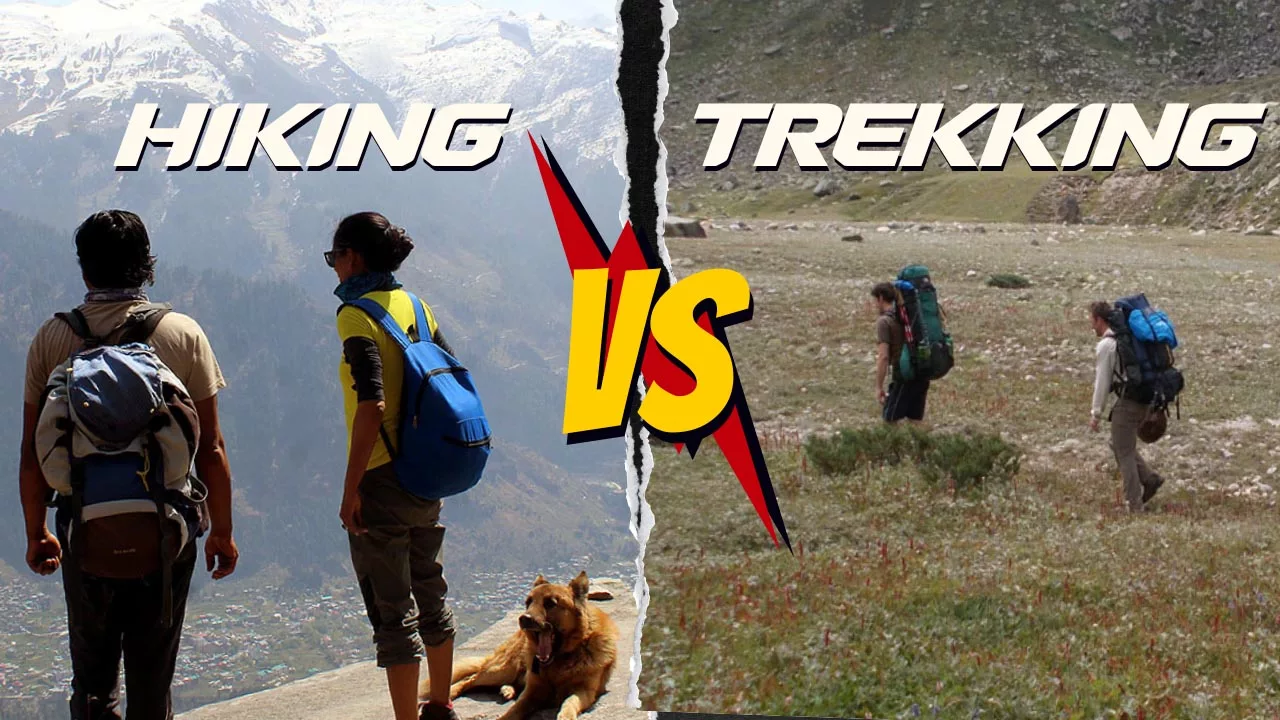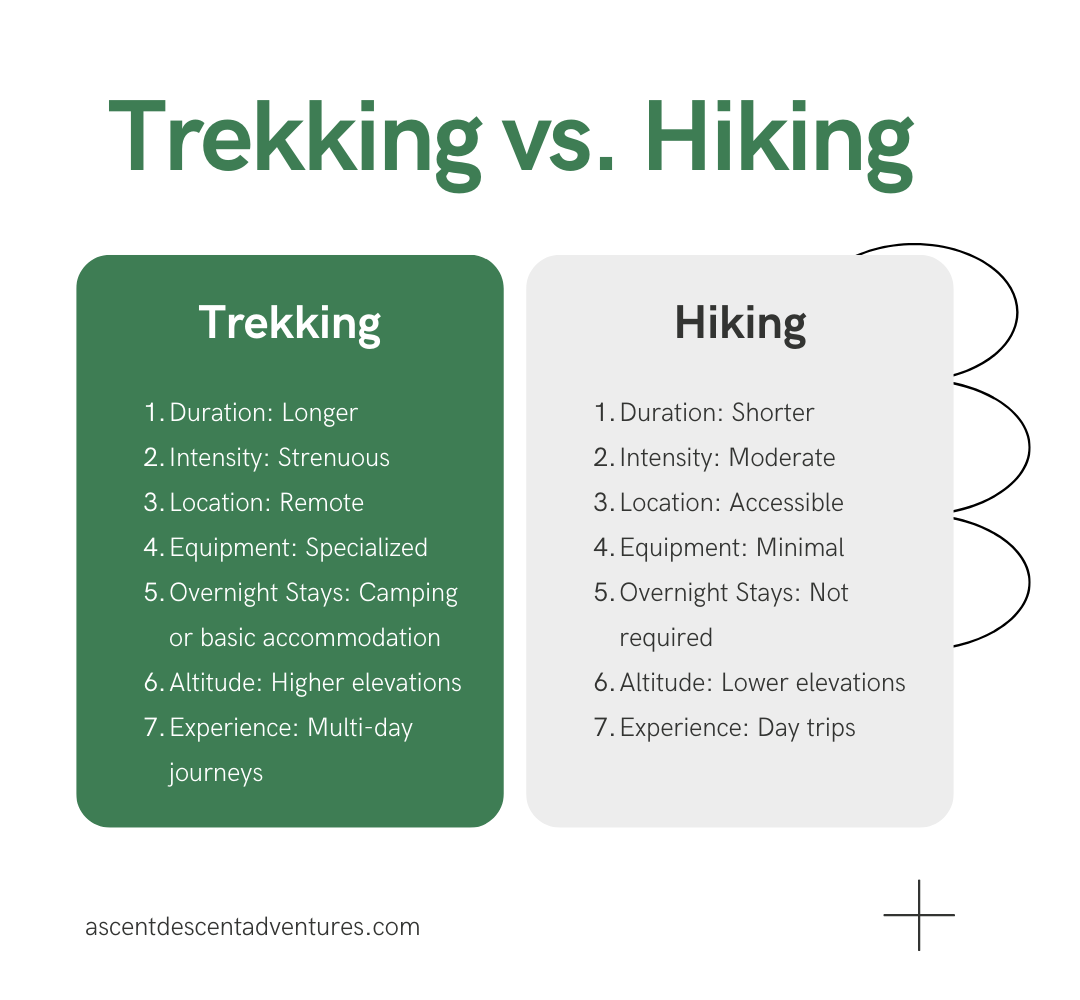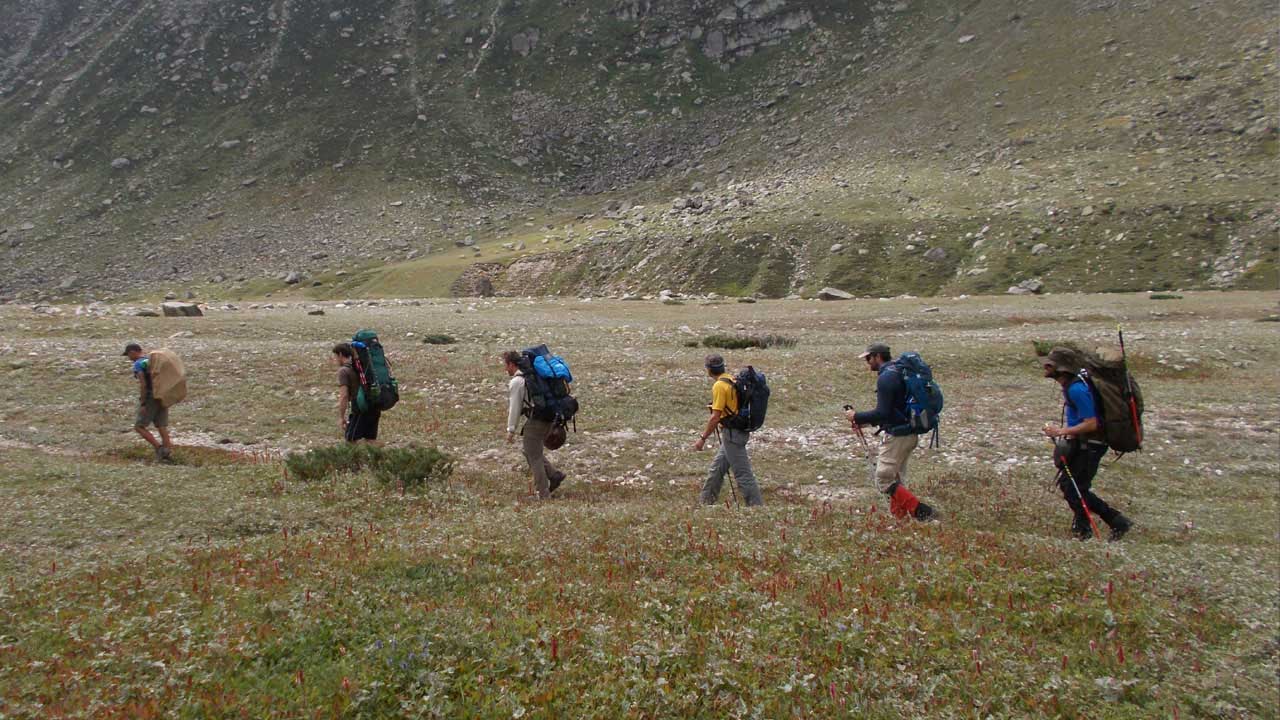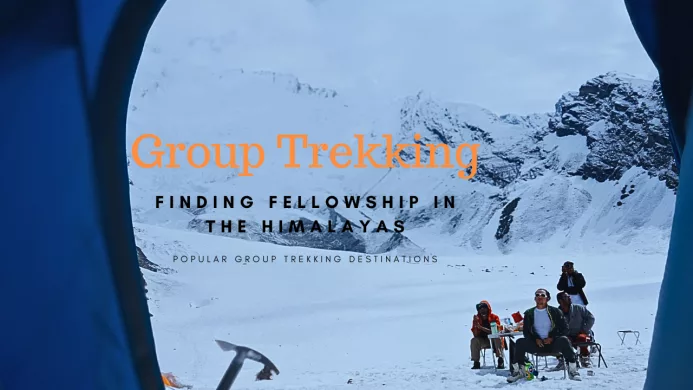Trek or Hike? Trekking vs. Hiking in the Indian Himalayas
Indian Himalayas
Introduction:
Trekking and hiking are two popular outdoor activities that allow visitors to immerse themselves in the stunning scenery of the Indian Himalayas. While the phrases “trekking” and “hiking” are sometimes used interchangeably, they represent unique experiences and techniques. In this post, we’ll look at the distinctions between trekking and hiking in the Indian Himalayas.

Intensity and Duration: Trekking vs. Hiking
a. Hiking: often refers to shorter, less demanding hikes lasting a few hours to a day. Hiking paths are well-established, often signposted, and typically feature mild ascents and descents.

b. Trekking: on the other hand, is a longer and more physically demanding sport. It often encompasses multi-day expeditions where trekkers cover greater distances, encounter varying terrain and face challenging ascents and descents.
Remote Locations and Wilderness: Trekking vs. Hiking
a. Hiking: routes are typically found in easily accessible regions such as national parks, forest reserves, and tourist destinations. These routes are frequently used and may include facilities such as picnic sites and visitor centers.
b. Trekking: pushes you farther into the forest, away from civilization. Trekking trails in the Indian Himalayas frequently pass through inaccessible regions, high-altitude passes, and isolated villages, offering a more immersive and adventurous experience in purely natural surroundings.

Equipment and Gear: Trekking vs. Hiking
a. Hiking: typically requires minimal equipment.
- A comfortable pair of walking shoes or boots
- Appropriate clothing layers
- A daypack
- Water
- Snacks and
- Sun protection
b. Trekking: necessitates specialized gear and equipment to ensure safety and comfort over extended periods. This includes
- Sturdy trekking boots
- Layered clothing for varying temperatures
- A backpack with the capacity to carry camping gear
- A sleeping bag
- Cooking utensils and
- Navigation tools like maps and compasses
20-Item List for Trekking
Camping and Overnight Stays: Trekking vs. Hiking
a. Hiking: Hikers often return to their starting point on the same day, making overnight stays unnecessary. They can enjoy day trips and return to comfortable accommodations in nearby towns or cities.
b. Trekking: Trekking involves multi-day journeys, and thus, trekkers must carry camping equipment or stay in basic tea houses, guesthouses, or tents along the trail. People commonly hire potters to bring camping items on multiday treks in the Himalayas. This allows them to fully experience the serenity of the Himalayan nights and wake up to stunning sunrise views.

Altitude and Acclimatization:
a. Hiking: trails are usually at lower elevations, where the risk of altitude-related illnesses is minimal. Acclimatization is not a significant concern during hikes, and individuals can engage in hiking activities without extensive prior preparation.
b. Trekking: Trekking in the Indian Himalayas often involves reaching higher altitudes, where the air becomes thinner, and acclimatization becomes crucial. Trekkers need to ascend gradually, take rest days, and stay hydrated to allow their bodies to adapt to higher elevations and reduce the risk of altitude sickness.
Example:
Popular hiking spots in Himachal Pradesh of the Indian Himalayas include:
- Triund in Dharamsala Kangra
- Lamadugh in Manali Kullu
- Day Hikes in Manali

Some popular treks in Himachal Pradesh of the Indian Himalayas include:
- Pin Parvati Trek, From Kullu to Spiti
- Bara Bhangal Trek From Kullu to Kangra
- Indarhar Pass Trek From Kangra to Chamba
Know More About Group Trekking

Conclusion:
Trekking and hiking offer distinct experiences in the Indian Himalayas, each catering to different preferences and levels of adventure. While hiking provides shorter and more accessible walks through scenic landscapes, Trekking takes you on longer journeys, deeper into the wilderness, and across challenging terrains. Understanding these differences will help you choose the activity that aligns with your aspirations and capabilities, ensuring a memorable and fulfilling experience in the majestic Himalayan realm.
Know More About Solo Trekking

- Similar Reading Mountaineering vs Trekking

Recommended Readings
- Trekking in India: Q&A Inside
- Trek in Manali Q&A
- Roaming the Ranges: 41 Treks Through the Himalayas of Himachal